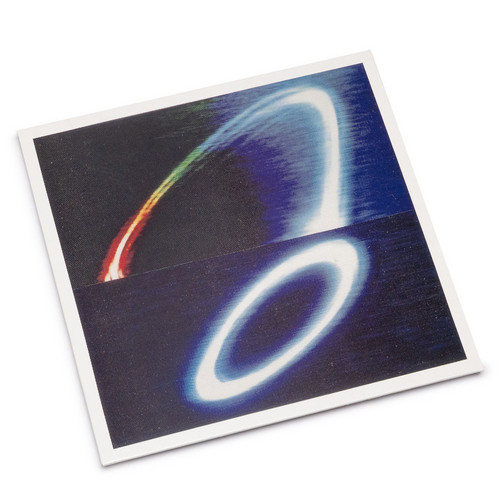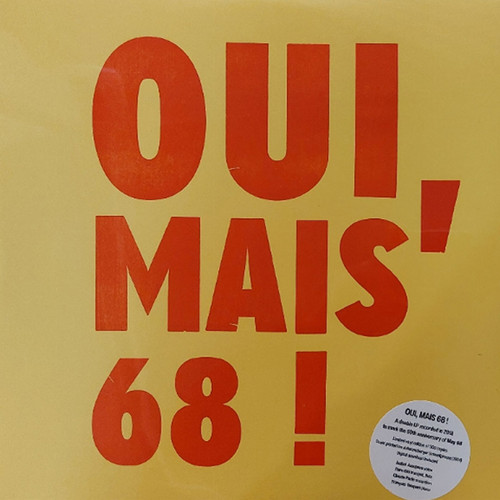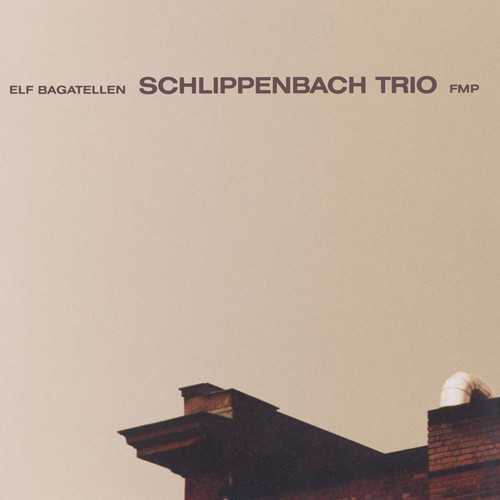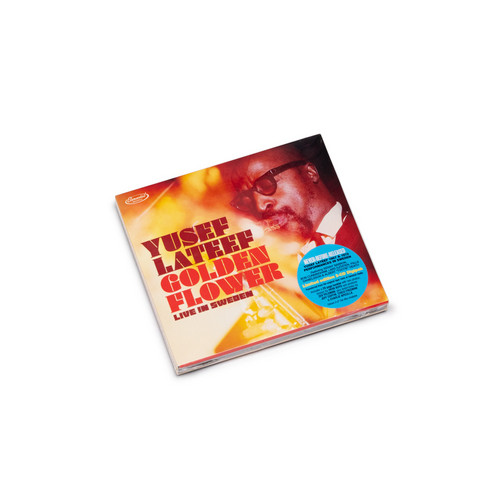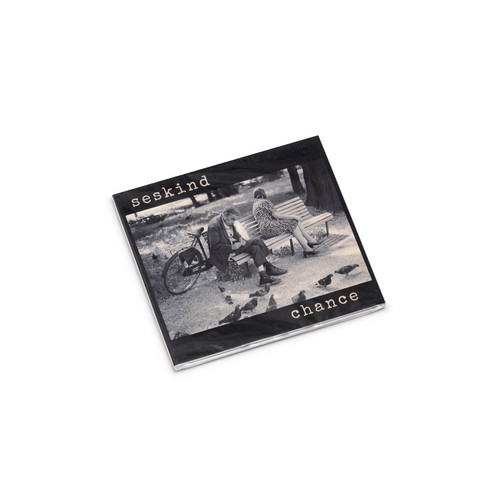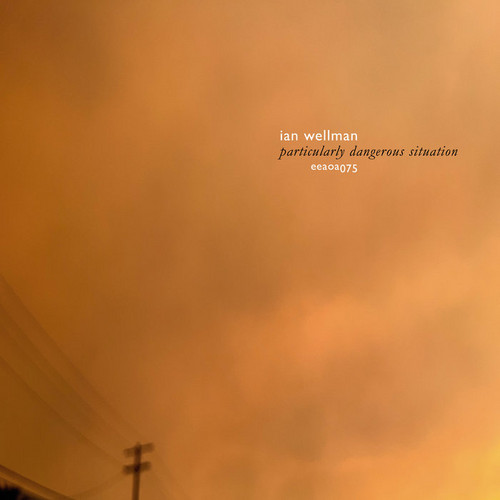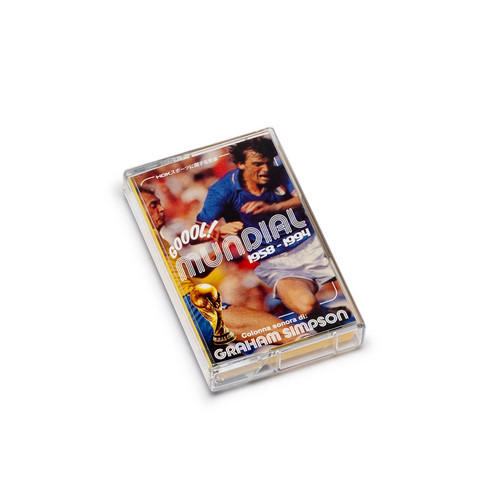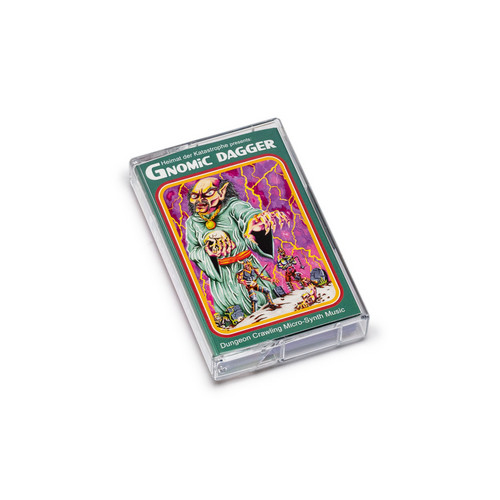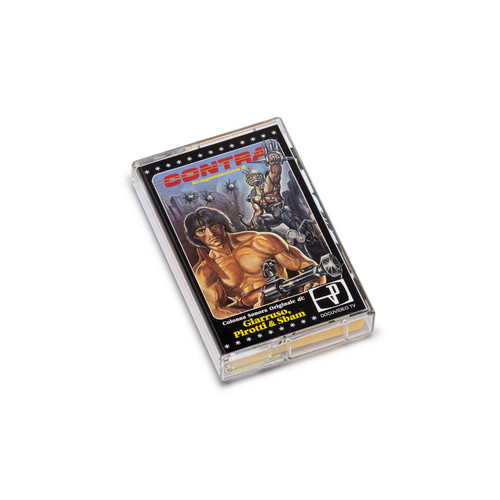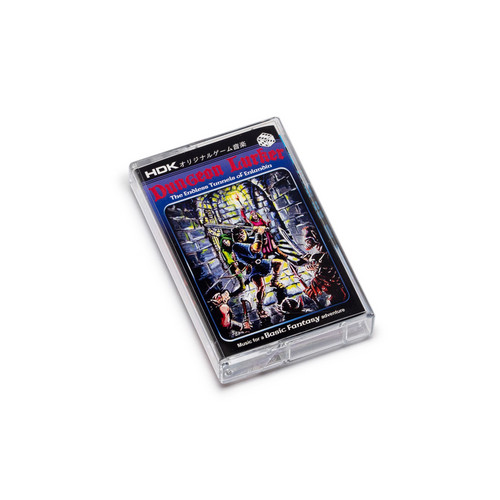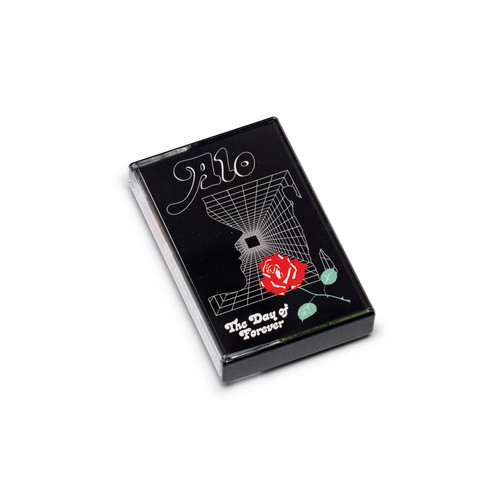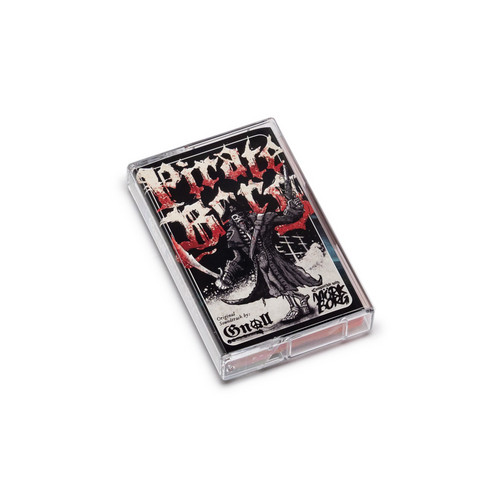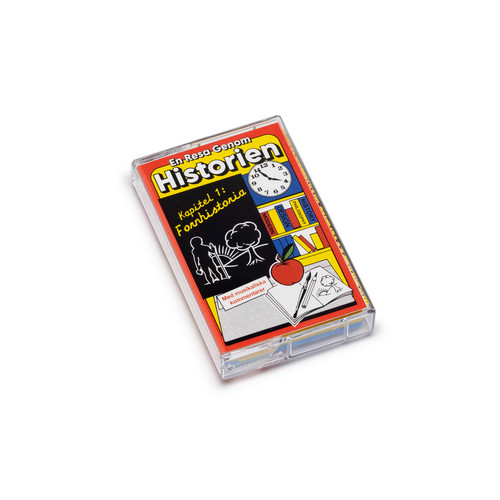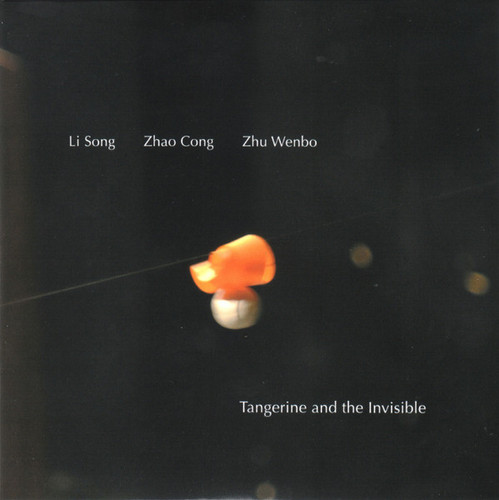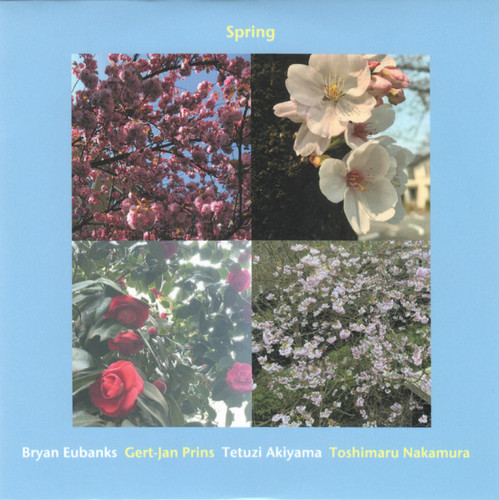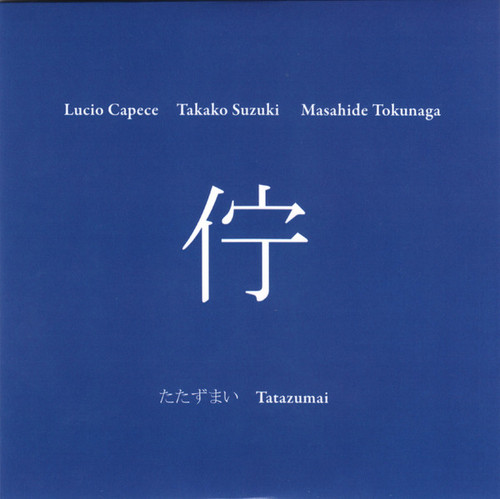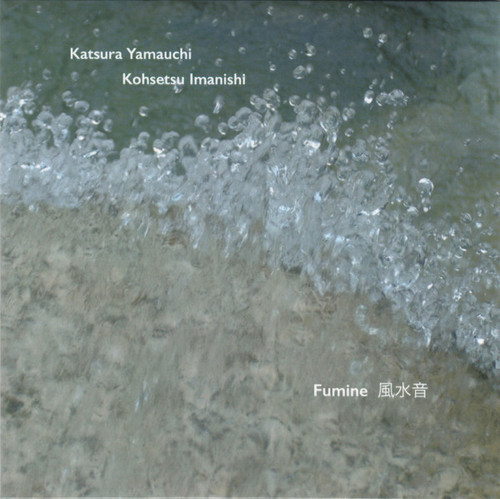New Arrivals
Uranus - Tibetan Singing Bowls
** Edition of 300 copies ** In the late 1980s, Klaus Wiese (Popol Vuh) deepened his connection with Tibetan culture. The result is a series of works solely dedicated to the universal purity of the Singing Bowls. Uranus, perhaps the most rigorous of these, is an intense meditation on the trans-personal sphere of the VI chackra. The music becomes like a single harmonic chant, the reflection of a constant flow of divine light, which transforms the psyche and dilates the secret passages of the hear…
Oui, Mais 68 ! Maybe 68 ?
Tip! Edition of 300 copies. François Tusques needs no introduction to serious listeners of European free jazz. His 1965 Free Jazz album - recorded with Bernard Vitet, Michel Portal, Beb Guérin, and François Jeanneau - helped establish Paris as a vital center for the transatlantic avant-garde, laying groundwork for the city's role as spiritual home to visiting American firebrands like Don Cherry, Sunny Murray, and Clifford Thornton. His subsequent work with Barney Wilen (Le Nouveau Jazz, 1967), h…
Nomia e Hool
** LP + Artist’s Signed Drawing "Aura". Edition of 200 copies ** HeghL’s Nomia e Hool takes the listener beyond traditional boundaries, presenting two extended tracks as part of a larger multidisciplinary exploration. Originating from a project by Lisa Baume and Francesco Trabattoni, the album gathers creators from diverse backgrounds - music, visual arts, writing, philosophy, science, and more - into a single creative studio. The result is a collection not just of music but of moments that inte…
Elf Bagatellen
The historical importance, influence, and stature of the Schlippenbach Trio was cemented long ago. Formed in 1970 by German pianist Alexander von Schlippenbach in the early days of European free jazz, the group also featured British saxophonist Evan Parker and German drummer Paul Lovens, and soon formed the core of the mighty Globe Unity Orchestra from that point on. As heard on its 1972 debut for FMP Pakistani Pomade - reissued by Cien Fuegos back in 2015 - its foundational music helped establi…
Golden Flower: Live In Sweden
There are musicians who play jazz and there are musicians who expand its very definition. Yusef Lateef was the latter - a visionary who brought the oboe, the argol, the shanai, the bamboo flute and countless other instruments into the jazz vocabulary decades before "world music" became a marketing category. Golden Flower: Live in Sweden presents two never-before-released concert recordings that capture this master at the height of his powers, finally emerging from the Sveriges Radio tape vaults …
Chance
The home-recorded album everything pointed to - now on vinyl and CD for the first time. After several delays, we finally received the long-awaited production date from the pressing plant - and are happy to share this long-overdue announcement. Following the 2022 reissue of Scott Seskind’s 1985 debut, there was never a question - we wanted to go further.
Ebalunga!!! exists to restore forgotten gems, and Scott’s music has been warming our hearts for years. So, to our own joy - and in response to a…
Efuru
Sixty years after Horace Tapscott founded the Pan-Afrikan Peoples Arkestra in Los Angeles, the flame burns bright in Berlin. Efuru is the first album by the Pan Afrikan Peoples Arktet, led by saxophonist and composer Fuasi Abdul-Khaliq - former assistant conductor, arranger and longtime member of Tapscott's legendary UGMAA collective. This is not nostalgia. This is continuation. This is the real deal.
Recorded live at the Schlot Jazz Club in Berlin on May 20, 2024, Efuru brings together the larg…
Particularly Dangerous Situation
*150 copies lmiited edition* Ian Wellman's “Particularly Dangerous Situation”, his first release for Elevator Bath and first vinyl LP, is a meditative, at times harrowing, interpretive document of the catastrophic California wildfires of 2025. Wellman's stunningly descriptive field recordings plus his signature tape loop textures and sampled drones combine for a dramatic ten-part narrative that is both frightening and sorrowful in its depiction of calamitous events. "On January 7, 2025 Southern …
Goal! Mundial
HDK is pleased to present a sensational new album, which will let you relive some of the most legendary moments in sport! Graham Simpson's "Goool! Mundial 1958-1994" is a journey through nearly forty years of football, punctuated by some of the most exciting tournaments of all: the World Cup. Sports stories masterfully told through the melodies of a magnificent musician HDK fans have come to love thanks to his previous albums "Mythology" and "Electrical Storm at the Micro Station." We're talking…
Dungeon Crawling Micro-Synth Music
Hello! This is the complete anthology containing all EPs published in 2024 by Gnomic Dagger. An essential tape for all fans of micro-dungeon crawling! Gnomic Dagger creates synth adventures on Hobbit-sized hardware instruments; handheld synths, micro samplers, and sounds from mini keyboards and vintage half-rack modules.
Contra: Kriegsmaschine 2
1988: a new mission awaits the mercenary Jake Contra. This time he is tasked with investigating a secret mega-weapon in possession of the Soviets. Contra flies to Abkhazia, on the Black Sea coast. There to welcome him is Marika, a spy who plays both sides, and Sergeant Volkov of the Black Sea Pumas, a secret paramilitary corp that deals with dirty business for the KGB.
Contra will discover that the secret weapon in possession of the Russians is the Behemoth KV-VI Tank, an updated model of the ol…
The Endless Tunnels Of Enlandin
"Several hundred years ago the Mage of Enlandin built a dungeon complex beneath his castle to protect all of his treasures and to serve as a last defense. The army of a neighboring country attacked, pounding the walls with catapults and blasting his defenses with spells.
The Mage and his faithful companions fled into the dungeon as the castle collapsed. Believing the Mage of Enlandin to be buried with his treasures, the attacking Lord ordered his men to dig through the rubble. Before they could …
The Day of Forever
HDK is honored to present a new artist, Alo, who debuts with an album of romantic Berlin-school electronic music in which each track is a fragment of a suspended world, a contemplative and restless electronic experience: hypnotic sequences, pulsating synthesizers, and melancholic textures evoke abandoned cities, decaying technologies, and forgotten memories.
The album (and its title) is a tribute to the English writer J.G. Ballard (1930–2009) and his frightening imaginative power.
Bloodsport Gambler
Bloodsport Gambler is a table-top board game for 1 or 2 players, focuses on a tense & seedy story of risk, luck, and the efforts that sway fate in your favor. Thrust into desperation by swelling debts, you must gamble on the foul pit fights of Ghoulmorrah in a last-ditch struggle to pay off a merciless syndicate of moneylenders. With looming payments fast approaching, the only way to beat the odds is to sleuth, scheme, and sabotage. While a sure bet is favorable to warding off debt collectors, t…
Pirateborg
For the first explorers, the Dark Caribbean was paradise. They had found only deserted islands and rich treasures. It was only when thousands left their overcrowded and corrupted homelands to colonize the islands that the Scourge appeared… Frightening screams echoed across the beaches, and from the night-black waves the undead rose. Terror spread like wildfire. First they came one at a time, then entire hordes, and soon the settlements were submerged by rivers of lifeless, nameless creatures. Po…
Kapitel 1: Fornhistoria
HDK launches its "Educational Series" with this cassette of experimental Swedish music on a prehistoric theme. Suitable for all children in primary and secondary schools, it will accompany them in their learning of history. The cassette is also ideal for adults with rather limited historical knowledge. Unfortunately, for now, it is only available in Swedish. The cassette includes a final test for self-assessment of learning.
Tangerine And The Invisible
*250 copies limited edition* Three Chinese musicians performed at Ftarri, Tokyo, on January 2, 2024. Li Song is a computer programmer and musician who lives in London. Zhao Cong and Zhu Wenbo are experimental/improvisational musicians based in Beijing. This album is made up of two performances (each over 30 minutes): "The Invisible Tangerine," a duo by Zhao Cong and Li Song, and "Three Lines," a trio by Li Song, Zhao Cong and Zhu Wenbo.
The compelling feature of "The Invisible Tangerine" is the …
Spring
*250 copies lmited edition* Bryan Eubanks (born in 1977) is a Berlin-based American musician who performs using soprano saxophone, electronics and computers. Gert-Jan Prins (born in 1961) is an Amsterdam-based musician whose performances make use of electronic noise and percussion. Both are well known on the international improvised music scene and carry out wide-ranging musical activities, including composition and sound installations in addition to improvisation. No-input mixing board player T…
Tatazumai
*250 copies limited edition* Lucio Capece is an Argentinian composer and improviser based in Berlin. His highly creative activities have been a focus of worldwide attention. Takako Suzuki is a Japanese dancer living in Berlin. A founding member of the dance company Sasha Waltz and Guests, she has performed in international festivals since the 1990s and carries out numerous collaborations with musicians. Masahide Tokunaga is a Tokyo-based alto saxophone player with a distinctive performance style…
Fumine
*200 copies limited edition* Born in 1954, Katsura Yamauchi is a saxophone player based in Oita, Japan. Since he began performing in earnest in the early 2000s, he has been touring and expanding his distinctive musical activities in Japan, Europe, North America and Asia. Koto player Kohsetsu Imanishi has an active career inside and outside Japan, performing music of various genres including classical Japanese music, improvisation and contemporary classical music. In addition to performing as a s…
